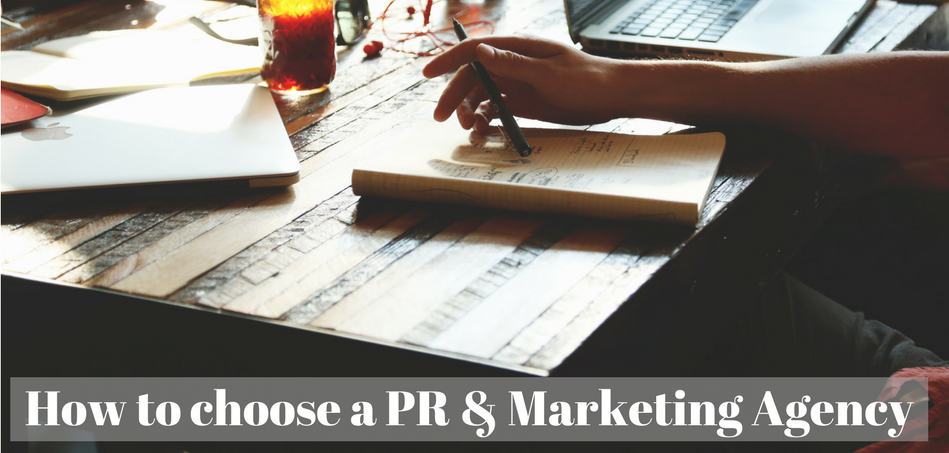Getting positive media brand coverage was recently rated as a priority business objective by tech PR & Marketing professionals in our survey.
This comes as no surprise as tech businesses can achieve rapid growth when their target customers are made aware of the benefits of their products and services. New consumer technology is desired by trend setters and new technology in the business sector can provide customers with substantial cost and time savings.
So, how does a business go about promoting itself to the media and potential clients? With this and other questions I decided to ask Mandy Brooks, our strategy director, and Alison Scarrot, Media Relations Account Manager at brookscomm:
What’s the difference in practice between PR and advertising? Which do you think is more effective?
Mandy says: ”Advertising is what you pay for, publicity is what you pray for.”

There are of course many opinions on which is best and in what measure but I like the thinking of Steve Cody of Inc. magazine , also quoted in Forbes, who notes: “Countless studies report that, next to word-of-mouth advice from friends and family, editorial commentary (usually generated by your friendly, behind-the-scenes PR practitioner) carries far more weight than advertising.”
“It’s not difficult to understand why,” Cody says. “Advertising continues to embrace an antiquated, top-down, inside-out way of communicating. It reflects senior management’s view on what a consumer or business-to-business buyer should think is important. PR, on the other hand, depends upon listening to the conversation and understanding the who, what, when, where, why and how of engaging in the discussion. Public relations executives excel in storytelling and, typically, present a perceived problem (i.e. childhood obesity) and their client’s unique solution (i.e. a new type of fitness equipment designed by, and for, pre-teens).”
Alison adds: “In practical terms, PR is content in the form of a story or news article that a media editor deems timely, relevant and newsworthy to the audience. When printed or posted, it is perceived as a trusted third-party endorsement of a brand. Whereas advertising is the method of paying the publication to ensure a brands messaging will be included. Through advertising, brands can control the exact wording and image of their brand and it’s guaranteed exposure.
However, advertising is always perceived as a company endorsing itself and therefore has less credibility than PR. In our experience a combination of both is very effective and maximises the reach and credibility of the brand but if I had to choose, I would say that PR is more effective as its more sincere and relevant to the reader. And also because people are accustomed to glancing over advertising.
How can the results of media relations be measured?
There are different ways to measure the impact of media relations.
Mandy notes: “We always provide details of the circulation and readership figures for publications plus the demographics of the reader where this information is available. Although we can’t be sure that everyone who looks at a newspaper or website reads in detail, this gives us a good guide to how many people have had your story put in front of them. We work closely on the right messaging with our clients, ensuring that we include information that resonates with the target audiences. We measure how often these messages are included in PR coverage.”
Alison adds: “A good specific example highlighting how our tech PR campaigns measurably and successfully bring in leads is that we work with some specialist tech businesses whose products are featured in trade publications. In the articles we have published there are reference codes for interested parties to quote if they enquire about the products. Our customers have been very happy with the sales from these enquiries. We provide all of our clients with monthly reports on media inclusion, from these they can see a correlation between media coverage and traffic to their websites. We encourage all our clients to ask where leads heard about them. It’s always nice to hear during review meetings that a client has converted a lead that PR coverage has generated for them!
If I was to consider hiring a Tech PR agency how can I tell if it is good?

Clients should look and ask for testimonials and examples of work to gauge the suitability of an agency. Other factors to consider include how long the agency has been in business and its size.
The most important factor to consider is the strength of the relationship with the account manager you’ll be working with. With some larger agencies, it’s possible that the senior person you meet with won’t be working on your account, this can cause misunderstandings and quality issues.”
What changes in trends have you noticed in Media Relations during your career?
Alison says: “When I started my career the Internet didn’t exist! We relied on print and post for correspondence with journalists and clients which although slow, certainly made life simpler in some ways! The advent of digital technologies has vastly widened the range of media publications and the potential reach of our clients’ brand and messages. The old forms of media (print, radio, TV) have diversified which has provided us with further possibilities with digital publications and the opportunity to harness the power of blogging and online reviews to promote products and services.
The variety of media formats available now is amazing and provides so many more opportunities, although with so many options, it can sometimes be a challenge to determine which publications to target. This is where knowing the publications in detail and understanding your client’s products and objectives comes into play.
Digitisation has also had a significant impact when it comes to influencing journalists. An editor recently told me he receives over 2000 PR requests each day. This means we need to produce articles for clients which are clear, concise relevant, attention-grabbing and newsworthy. When you are writing about complex technology this is even more important.
Mandy adds: “I’ve also seen client’s expectations change, especially during the last 5 or so years. Clients need a more strategic service which aligns with their business objectives and provides measurable results. They like it that we’re able to integrate media relations, PR and digital marketing services. For us this has made the role more strategic and entrepreneurial, more measurable and more enjoyable.
More than ever, we feel that we are a vital part of our clients team, very much focused on achieving business outcomes for each individual client by utilising a specifically tailored integration of PR, marketing and lead generation services to achieve the best results.”







